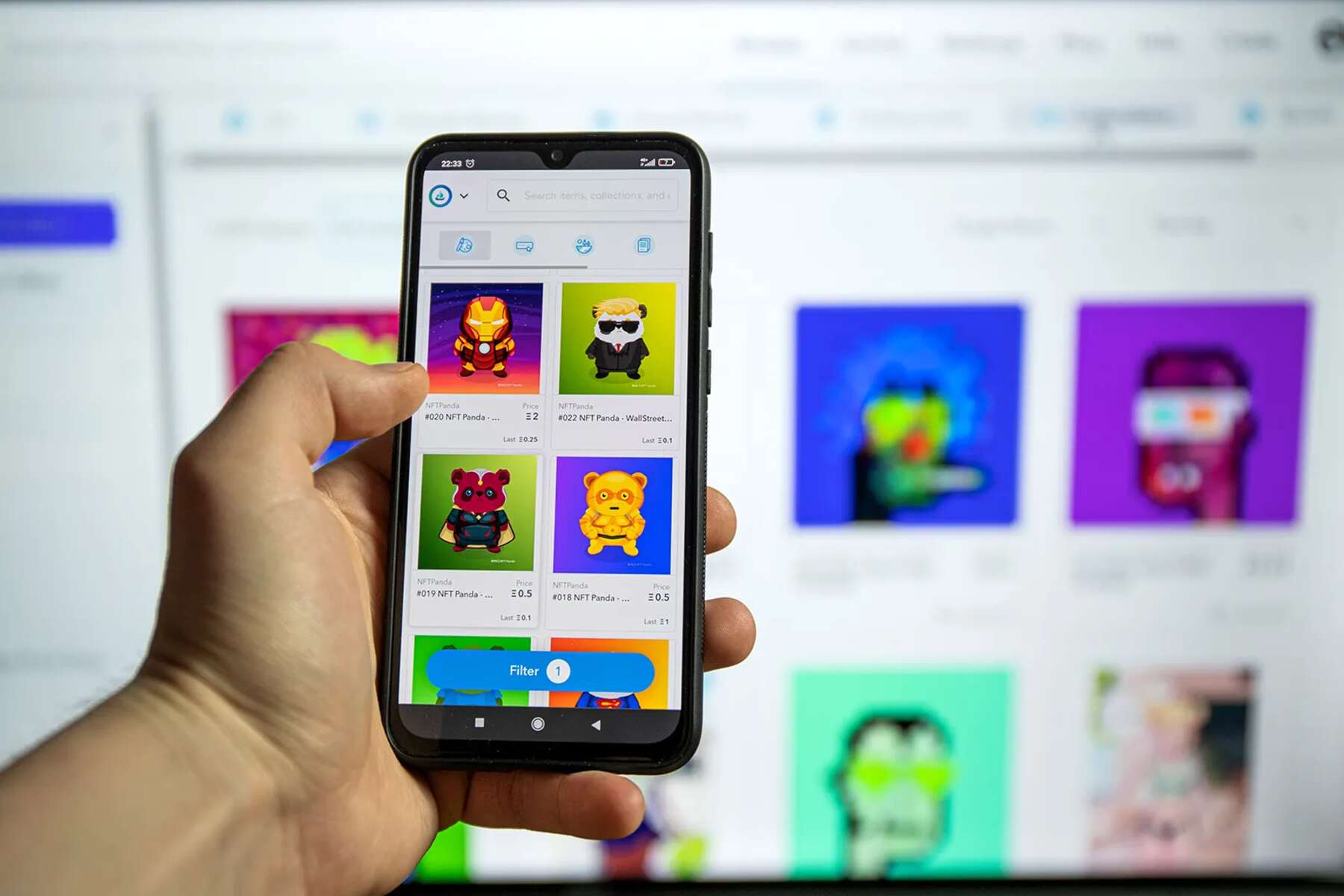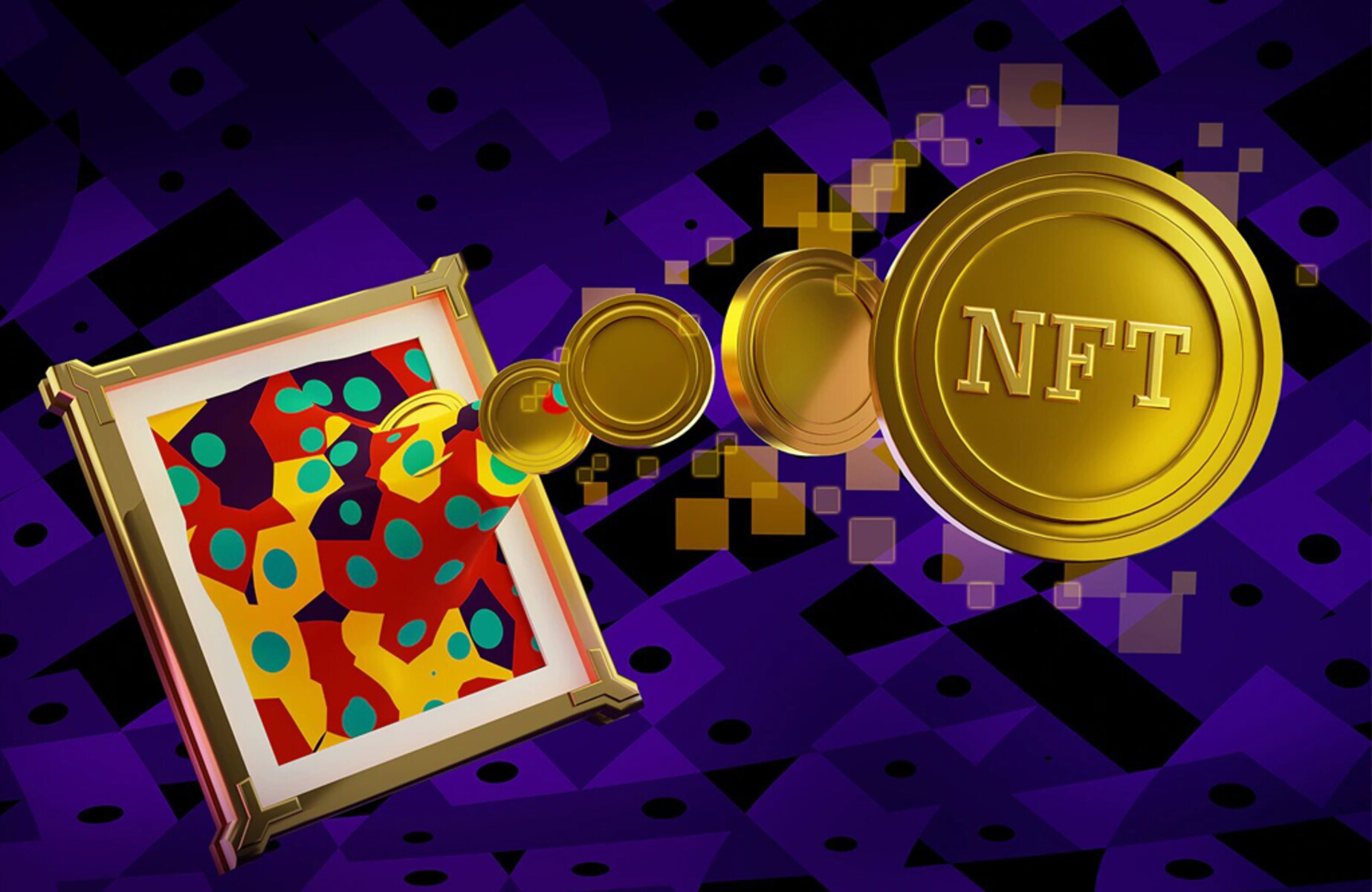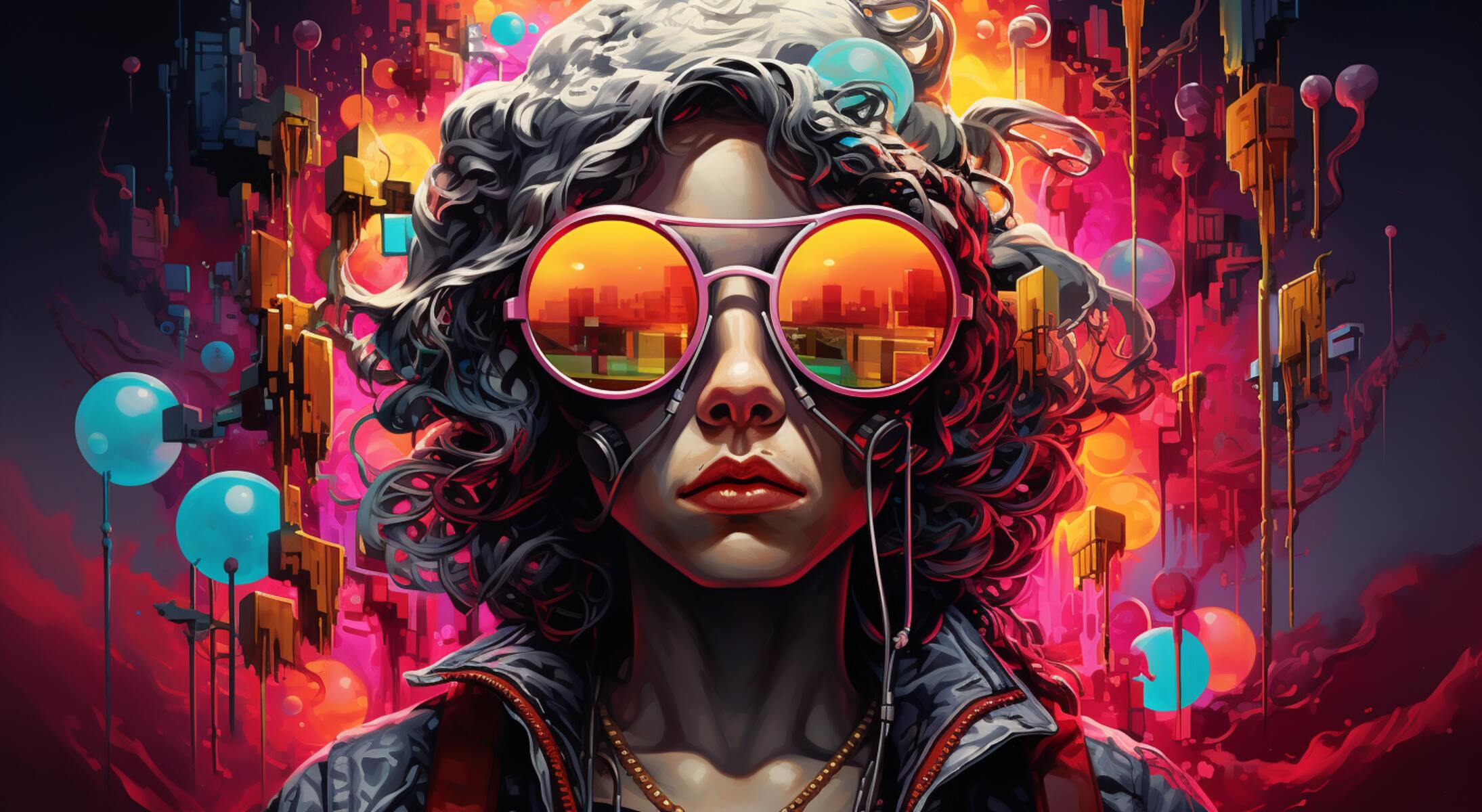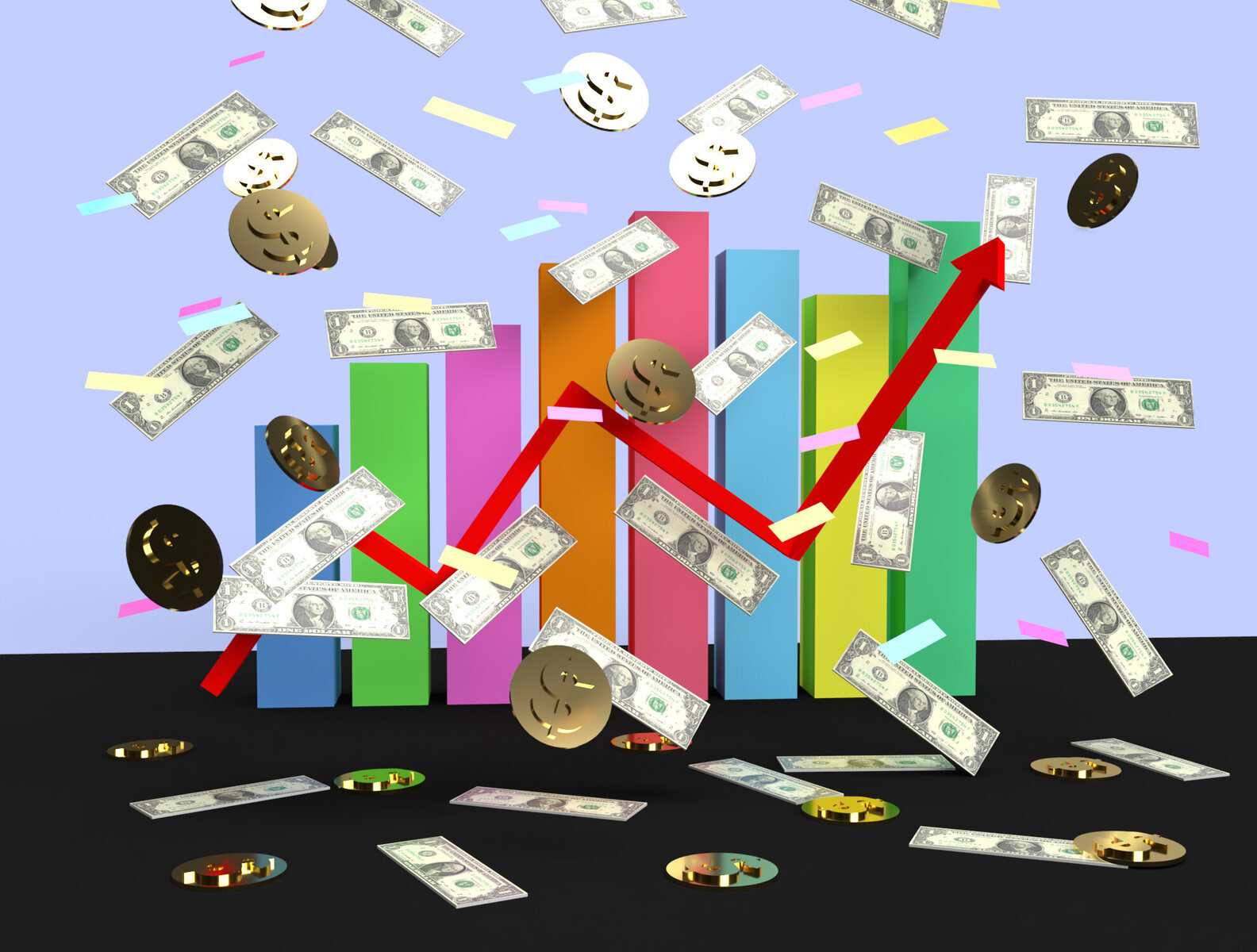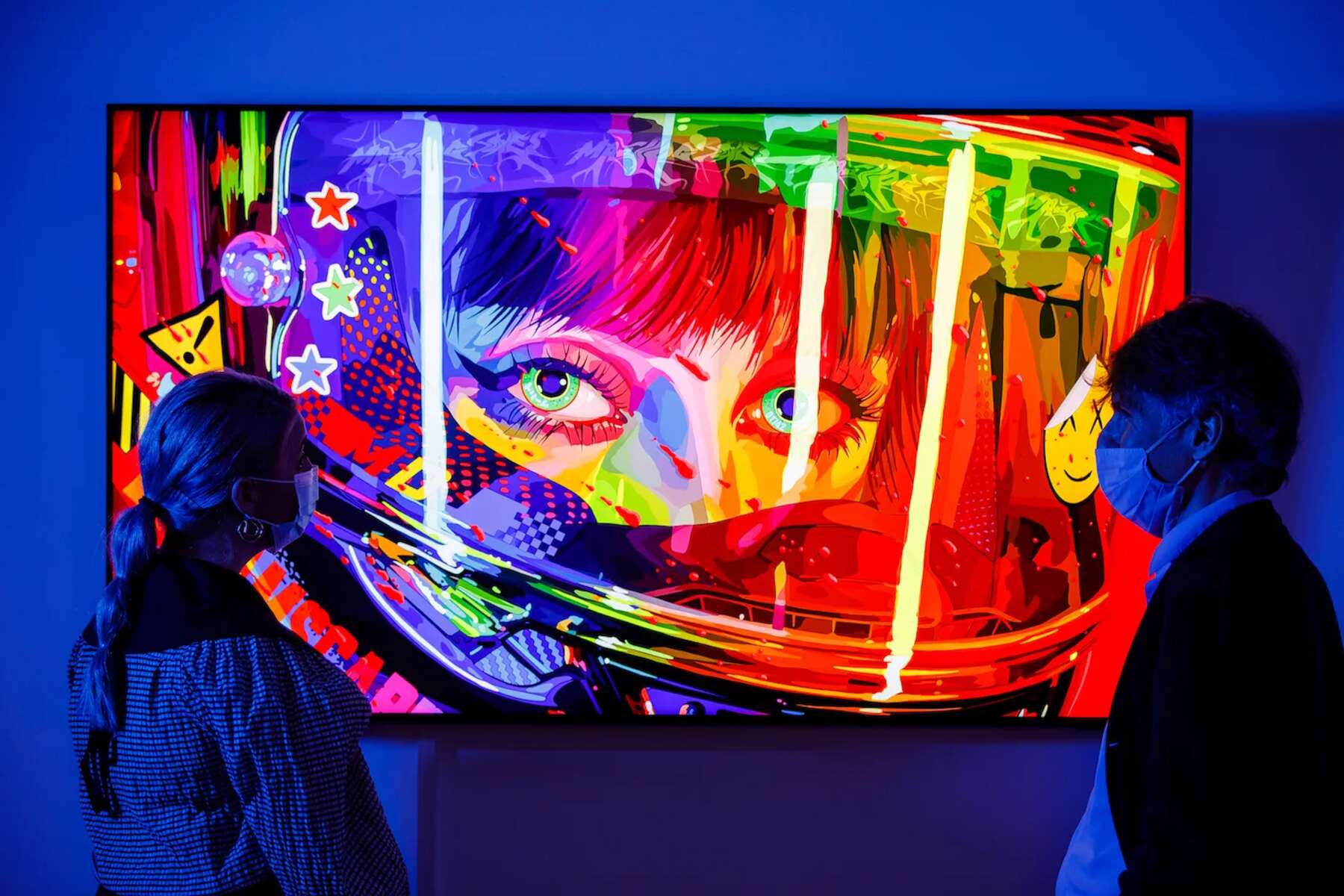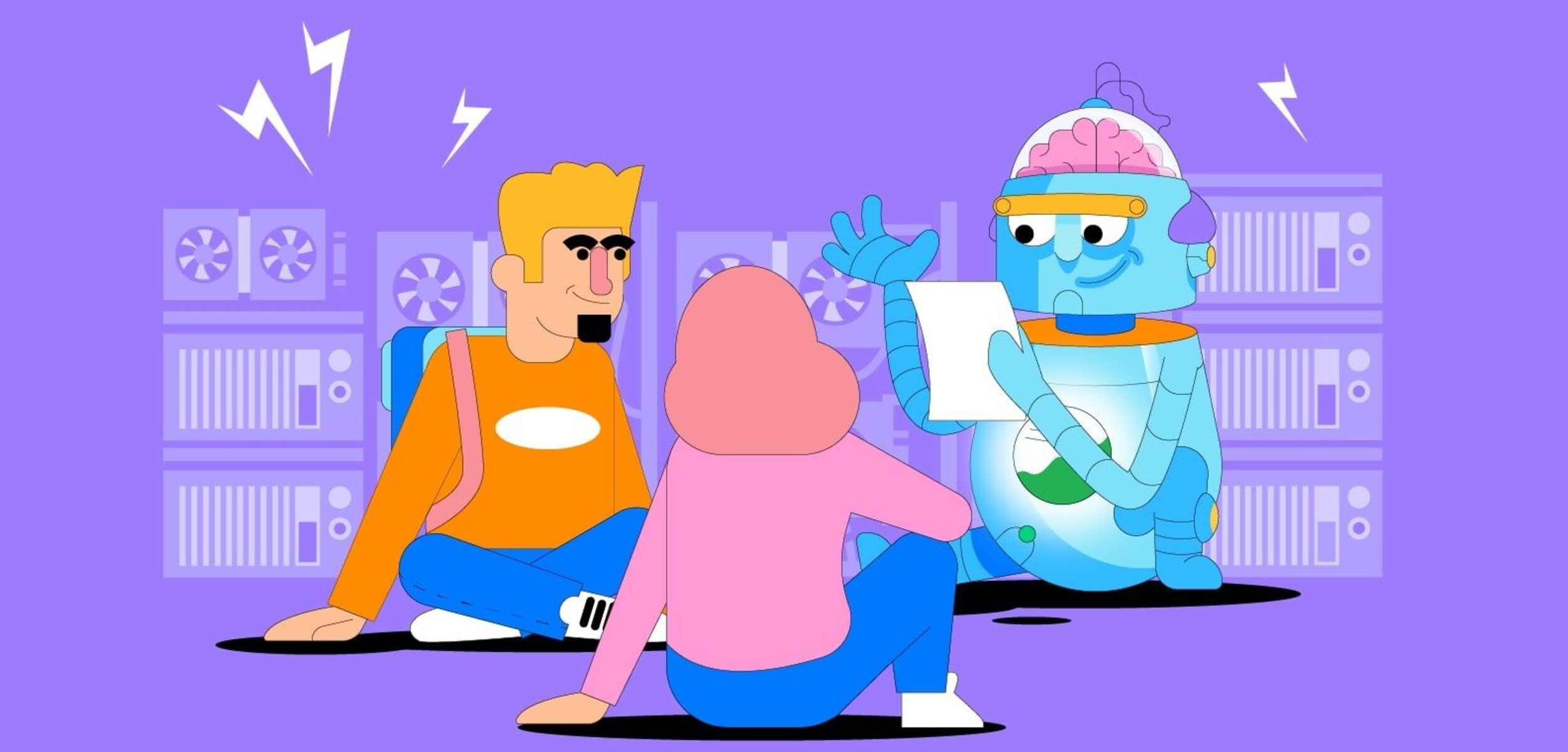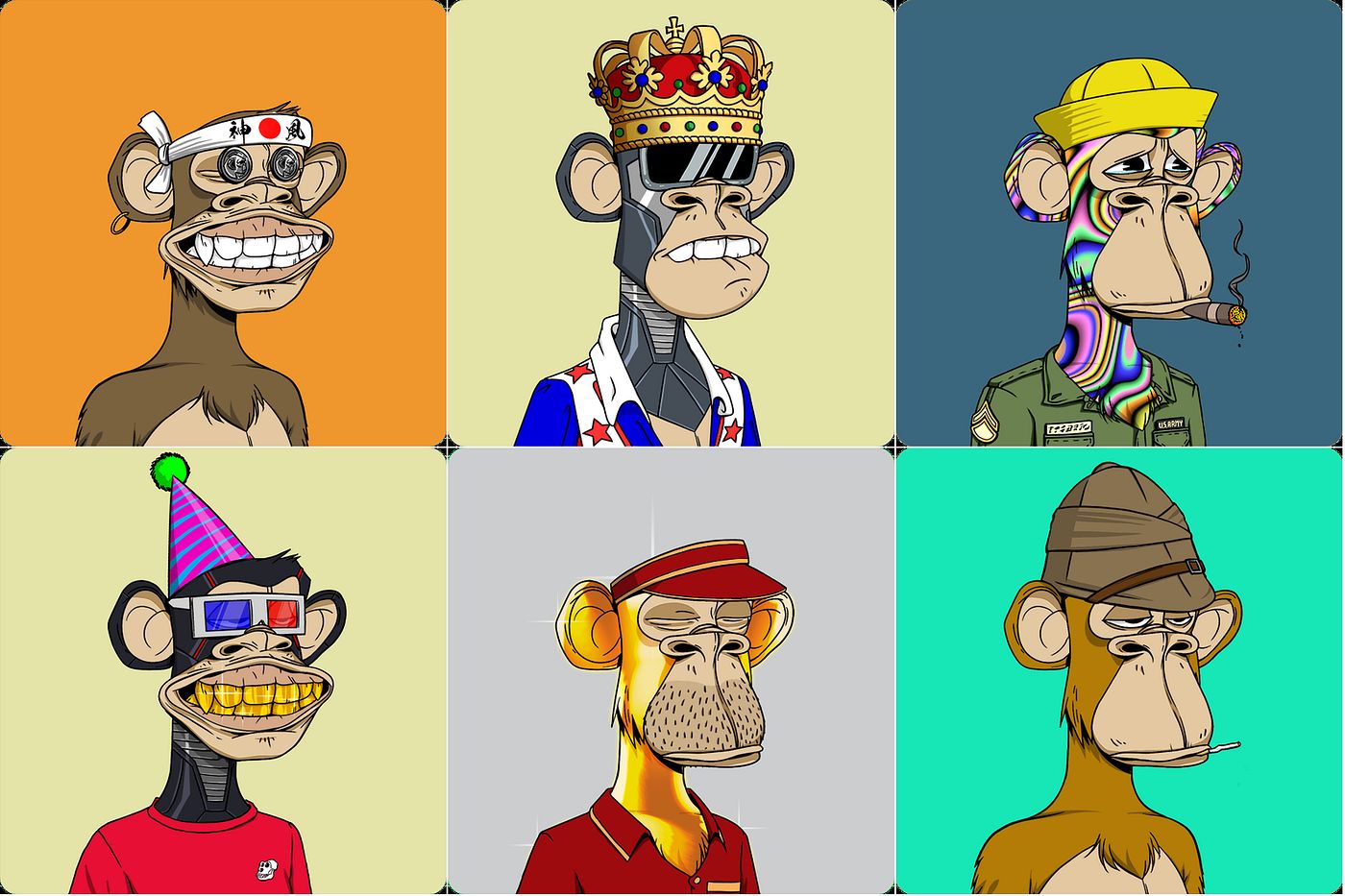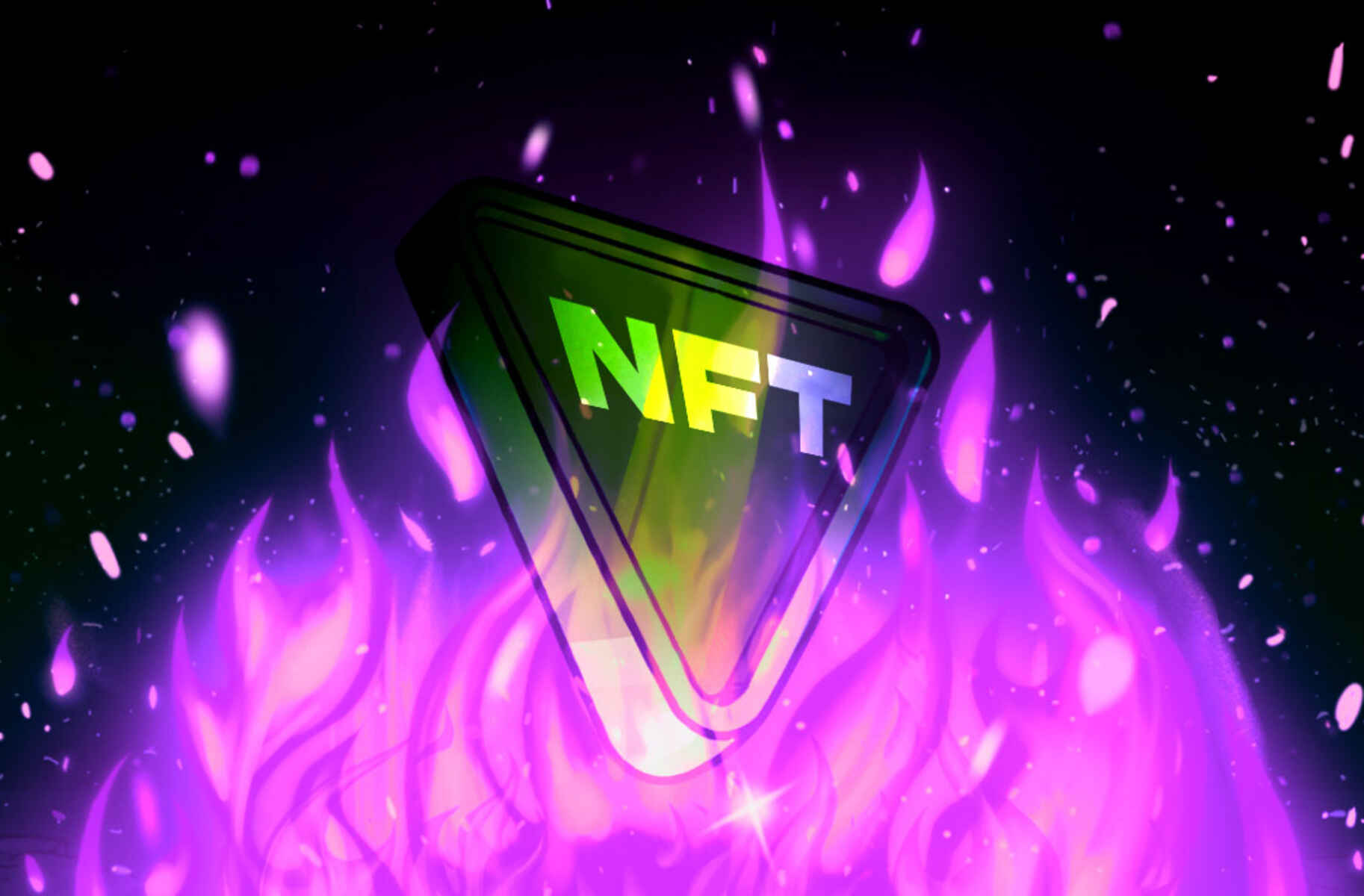What is an NFT?
NFT, which stands for Non-Fungible Token, has become a buzzword in the world of digital art and collectibles. But what exactly is an NFT? Put simply, an NFT is a unique digital asset that represents ownership or proof of authenticity for a specific item or piece of content. Unlike cryptocurrencies such as Bitcoin or Ethereum, which are fungible and can be exchanged on a one-to-one basis, NFTs are indivisible and cannot be directly swapped with another token.
NFTs are built on blockchain technology, which ensures the security and immutability of the digital assets. The blockchain acts as a decentralized ledger, storing information about each unique token and its ownership history. This transparent and tamper-proof system provides a reliable way to verify the authenticity and provenance of NFTs.
One of the key characteristics of NFTs is their ability to represent both tangible and intangible assets in the digital realm. While the most common use case for NFTs is in the world of art, they can also be applied to other digital assets like music, videos, virtual real estate, and even virtual goods in gaming environments.
The rise of NFTs has allowed artists, creators, and collectors to engage in new forms of digital monetization and ownership. Artists can mint their creations as NFTs, giving them the ability to sell unique digital artworks directly to collectors without the need for intermediaries. Collectors, on the other hand, can acquire and trade these digital assets, knowing that they have exclusive ownership and a verifiable record of authenticity.
It is important to note that while NFTs provide ownership rights and authenticity for digital assets, they do not grant copyright or intellectual property rights. The creator retains those rights unless they choose to transfer them separately.
In summary, NFTs have revolutionized the way digital assets are valued and exchanged. These unique tokens provide a secure and transparent way to establish ownership and authenticity for digital content, opening up new possibilities for artists, creators, and collectors in the digital space.
Understanding the concept of NFTs
To fully grasp the concept of NFTs, it is important to delve into their underlying principles and features. NFTs, or Non-Fungible Tokens, are a unique type of digital asset that have gained significant attention in recent years. Unlike traditional cryptocurrencies that are interchangeable and can be replaced by an identical unit, NFTs are distinct and one-of-a-kind. Each NFT contains a specific identifier that sets it apart from all others, making it irreplaceable and valuable in its own right.
One way to understand the concept of NFTs is to think of them as digital certificates of authenticity. They serve as digital proof of ownership for a particular item or piece of content, whether it be a digital artwork, a collectible card, a music album, or even a virtual land in a virtual world. The blockchain technology on which NFTs are built ensures that the ownership record remains immutable and verifiable.
NFTs have unlocked a new realm of possibilities for artists, creators, and collectors. Artists can tokenize their work as NFTs, effectively transforming them into digital assets that can be bought, sold, and traded. This offers a tremendous opportunity for artists to monetize their creations directly and gain recognition in the digital art world.
What sets NFTs apart from traditional digital files is their scarcity and provenance. NFTs can be created in limited quantities, giving them a sense of exclusivity and increasing their desirability among collectors. Additionally, the blockchain technology used in NFTs ensures the transparency and traceability of every transaction, allowing collectors to view the ownership history and verify the authenticity of the item they are acquiring.
NFTs also introduce the concept of smart contracts, which are programmable agreements that automatically execute specific conditions. These smart contracts dictate how an NFT can be used, such as determining whether the creator receives royalties when the NFT is resold or enabling access to additional content or experiences related to the NFT.
It’s important to note that the value and perception of NFTs can be subjective and often depend on factors such as the reputation of the creator, the demand within the market, and the uniqueness of the item. What one person may find valuable, another may not. However, the rise of NFTs has undoubtedly sparked conversations and innovations within the digital art and collectibles space, providing new opportunities for artists and collectors alike.
The components of an NFT
To understand the inner workings of an NFT (Non-Fungible Token), it’s essential to break down its components. An NFT consists of several key elements that give it its unique characteristics and value.
The first component is the metadata, which provides essential information about the NFT. It includes details such as the name of the artwork, the artist’s name, a description of the piece, and any additional attributes or properties that accompany the NFT. This metadata ensures that the NFT has a clear identity and context for prospective buyers and collectors.
Additionally, the token ID is a crucial component of an NFT. This unique identifier distinguishes one NFT from another. Think of it as a digital fingerprint that makes each NFT distinct and differentiates it from all others on the blockchain. The token ID ensures that the ownership and authenticity of the NFT can be verified at any given time.
Another important component of an NFT is the digital asset itself. This can be a digital artwork, a music file, a video, a virtual item, or any other form of digital content. The digital asset is the core of the NFT, and it is what gives the NFT its value and appeal to collectors and enthusiasts.
The token standard is also a critical component of an NFT. Ethereum’s ERC-721 was the first widely adopted token standard for NFTs, providing a set of rules and guidelines that define how NFTs should be created, managed, and interacted with on the Ethereum blockchain. Other blockchain platforms have since developed their own token standards for NFTs, each with its unique features and capabilities.
Lastly, the ownership history and provenance of an NFT play a vital role in its value and authenticity. The blockchain records every transaction involving the NFT, including the initial creation, subsequent sales, and transfers of ownership. This transparent history allows anyone to trace the lineage of the NFT and ensures that each transaction is verified and cannot be tampered with.
In summary, the components of an NFT include metadata, token ID, the digital asset, token standards, and the ownership history. These elements work together to create a unique and valuable digital asset that can be bought, sold, and collected in the digital marketplace. Understanding these components is crucial for artists, collectors, and enthusiasts participating in the NFT ecosystem.
NFTs and Blockchain technology
NFTs (Non-Fungible Tokens) are intricately connected to blockchain technology, which serves as the foundation for their creation, ownership, and verification. Blockchain technology, often associated with cryptocurrencies like Bitcoin and Ethereum, is a decentralized and transparent digital ledger that records and validates transactions across a network of computers.
The use of blockchain technology ensures the security, traceability, and immutability of NFTs. Each NFT is created as a unique token on a blockchain network, typically using a standardized token standard such as ERC-721 or ERC-1155 on the Ethereum blockchain. This tokenization process assigns a distinct digital representation to the NFT, allowing it to be easily identified and tracked.
The blockchain network acts as a distributed ledger that records all the transactions involving NFTs. This means that every transfer of ownership or subsequent sale of an NFT is permanently recorded on the blockchain, creating an unalterable history of ownership. This transparent record ensures that the provenance and authenticity of an NFT can be easily verified at any time.
In addition to ownership verification, blockchain technology also enables the seamless transfer of NFTs between parties. Through smart contracts, programmable agreements that self-execute predefined conditions, the transfer of ownership can be automated. Smart contracts can include rules for royalties or commissions, ensuring that creators receive a percentage of future sales when their NFTs are resold.
The decentralized nature of blockchain technology plays a crucial role in the security and integrity of NFTs. Unlike centralized systems where a single entity controls the database, blockchain networks are distributed among multiple computers or nodes. This means that there is no single point of failure or vulnerability that can be exploited to manipulate or counterfeit NFTs.
Blockchain technology has a transformative impact on NFTs by enabling artists, creators, and collectors to engage in decentralized marketplaces. These marketplaces provide a platform for artists to mint and sell their NFTs directly to collectors, eliminating the need for intermediaries. The transparency and security offered by blockchain technology also foster trust and confidence among buyers and sellers in the NFT ecosystem.
In summary, blockchain technology revolutionizes the world of NFTs by providing a secure, transparent, and decentralized infrastructure for creating, owning, and trading these unique digital assets. As NFTs continue to gain popularity, blockchain technology will play a vital role in shaping the future of digital ownership and collectibles.
Exploring the visual representation of an NFT
When it comes to Non-Fungible Tokens (NFTs), the visual representation plays a significant role in capturing the attention and interest of collectors and enthusiasts. While the underlying value of an NFT lies in its uniqueness and ownership rights, the visual element is what initially draws people in and creates an emotional connection.
The visual representation of an NFT can vary greatly depending on the type of digital asset and the creativity of the artist. It can encompass a wide range of mediums, including digital artworks, illustrations, animations, photographs, videos, and even virtual reality experiences. The NFT serves as a container for these visual elements, giving them a digital form that can be traded and collected.
The visual representation often reflects the artistic flair and style of the creator. Artists can use their chosen medium to bring their imagination to life and convey their unique vision. This can include exploring traditional artistic techniques or experimenting with cutting-edge digital tools and technologies.
One of the advantages of NFTs is that they allow for dynamic and interactive visual representations. Artists can create NFTs that change over time, reacting to external factors or user input. For example, a digital artwork could incorporate elements that respond to the viewer’s actions, creating an immersive and personalized experience.
The visual representation of an NFT also extends beyond the artwork itself. Artists often accompany their NFTs with additional visual elements such as title cards, descriptions, and previews that provide more insight into the piece. These supporting visuals can help collectors better understand and appreciate the artistic intention and context of the NFT.
Furthermore, the visual representation of an NFT can have a significant impact on its monetary value. Collectors are often drawn to visually stunning and aesthetically pleasing NFTs, which can garner higher demand and prices in the marketplace. The rarity, quality, and level of detail in the visual representation can contribute to the perceived value and desirability of the NFT.
In summary, the visual representation of an NFT is a crucial element that captures the attention and imagination of collectors. It allows artists to showcase their creativity and unique style while creating an emotional connection with the audience. The visual representation, along with its underlying digital asset, plays a vital role in the valuation and appreciation of NFTs in the digital art and collectibles space.
Different types of visual NFTs
The world of Non-Fungible Tokens (NFTs) encompasses a wide variety of visual representations. Artists and creators use different mediums and styles to bring their unique visions to life in the form of NFTs. Here are some of the different types of visual NFTs that you may come across:
- Digital Artworks: Digital artworks are one of the most popular types of visual NFTs. They can range from 2D illustrations and paintings to 3D sculptures and installations. Artists leverage digital tools and software to create intricate and visually stunning pieces that can be appreciated in the digital realm.
- Animated NFTs: Animated NFTs add a dynamic element to the visual representation. They can include animated illustrations, short films, or interactive experiences that bring the artwork to life. These NFTs often captivate collectors with their captivating movement and storytelling.
- Photography NFTs: Photography has found a new home in the NFT space. Photographers can showcase their unique perspectives and capture fleeting moments through NFTs. From breathtaking landscapes to intimate portraits, photography NFTs offer a new way for photographers to monetize their work.
- Virtual Reality (VR) NFTs: Virtual reality NFTs provide immersive experiences that transport collectors into virtual worlds and environments. Artists can create 3D virtual spaces, objects, or even entire virtual realms that collectors can explore using virtual reality headsets or other devices.
- Video NFTs: Video NFTs merge the worlds of filmmaking and NFTs. They can include short films, music videos, or animated narratives that tell stories and evoke emotions. Video NFTs offer a new platform for filmmakers and video artists to showcase their talent and reach a global audience.
- Gaming NFTs: Gaming NFTs involve the creation of virtual items, characters, or assets that can be owned, traded, and used within video games or virtual worlds. These NFTs can add value and uniqueness to a player’s gaming experience and serve as collectibles within gaming communities.
- Generative Art NFTs: Generative art refers to art that is created using algorithms and code. These NFTs often involve randomness and computational processes to generate unique and visually striking images. Generative art NFTs offer a fascinating blend of artistic expression and technological innovation.
- Mixed Media NFTs: Mixed media NFTs combine various artistic mediums and techniques. They can include a combination of digital and traditional art elements, such as collages, mixed media sculptures, or augmented reality (AR) experiences. These NFTs showcase the versatility and creativity of artists working across different mediums.
These are just a few examples of the different types of visual NFTs that exist. Artists continue to push the boundaries of creativity, experimenting with new mediums, techniques, and technologies to create visually captivating and unique NFTs.
How artists create NFTs
Creating and minting Non-Fungible Tokens (NFTs) has provided artists with a new avenue for showcasing and monetizing their work. The process of creating an NFT involves several key steps, allowing artists to transform their digital creations into unique digital assets. Here is a general overview of how artists create NFTs:
- Choose a platform: Artists begin by selecting a platform or marketplace to mint and sell their NFTs. Popular platforms include Ethereum-based platforms like OpenSea, Rarible, and SuperRare, among others. Each platform has its own set of guidelines, fees, and community, so artists should choose one that aligns with their goals and vision.
- Create digital artwork: Artists create their digital artwork using various software tools and techniques. This can include digital painting, 3D modeling, graphic design, or any other digital art medium. Artists have the freedom to explore their creativity, allowing them to produce unique and visually captivating artworks that will be transformed into NFTs.
- Prepare metadata: Artists curate and prepare metadata for their NFTs. Metadata includes key information about the artwork, such as its title, description, edition number (if applicable), and additional attributes. This metadata serves as a way to provide important context and details about the NFT to potential buyers.
- Mint the NFT: Once the artwork and metadata are ready, artists can proceed to mint their NFTs on their chosen platform. Minting an NFT involves creating a unique token on the blockchain that represents the artwork. This process typically requires connecting the artist’s wallet to the platform and following the specific minting instructions.
- Set pricing and royalties: Artists have the ability to set the initial price of their NFTs. They can choose to sell their NFTs through bidding or at a fixed price. Additionally, artists can set royalties, which allow them to earn a percentage of future sales whenever their NFTs are resold in the secondary market.
- List and promote the NFT: After minting the NFT, artists list it on the marketplace and promote it through various channels. This can include social media platforms, art communities, or personal websites. Effective promotion and marketing strategies can help attract potential buyers and collectors to the NFT.
- Engage with the NFT community: Artists can actively engage with the NFT community by participating in events, collaborations, or discussions. This allows artists to gain exposure, build relationships with collectors, and gain insights and feedback on their work.
- Manage and track sales: Artists should stay informed and manage their sales by tracking their NFTs’ performance, monitoring secondary market activity, and ensuring prompt delivery of the NFT to buyers. This helps artists understand the demand for their work and make informed decisions about their future creations.
By following these steps and embracing the NFT ecosystem, artists have a unique opportunity to showcase their creativity, gain recognition, and establish a direct connection with collectors who appreciate their work.
Factors that determine the appearance of an NFT
The appearance of an NFT (Non-Fungible Token) is influenced by several factors that contribute to its visual presentation and overall appeal. Artists and creators carefully consider these factors when designing their NFTs to make them visually captivating and unique. Here are some key factors that determine the appearance of an NFT:
- Artistic Style: The artistic style chosen by the artist plays a significant role in shaping the appearance of an NFT. Whether it’s realistic, abstract, surreal, or any other style, the chosen approach sets the tone and visual language of the artwork.
- Color Palette: The selection of colors can greatly impact the aesthetics of an NFT. Artists may choose vibrant and bold colors to create eye-catching visuals, or they may opt for muted and subtle tones for a more nuanced and contemplative look.
- Composition: The arrangement and organization of the visual elements within the NFT determine its composition. Artists consider aspects such as balance, focal points, and the positioning of various elements to create a visually pleasing and engaging composition.
- Detail and Complexity: The level of detail and complexity within an NFT can greatly enhance its appearance. Intricate patterns, textures, and fine details can captivate viewers and add depth and richness to the artwork. On the other hand, minimalist designs can convey simplicity and elegance.
- Visual Effects and Techniques: Artists may incorporate various visual effects and techniques to enhance the appearance of an NFT. This can include techniques such as lighting, shading, depth of field, motion, or the use of 3D elements. These effects can create a sense of dynamism and visual impact.
- Originality and Uniqueness: The originality and uniqueness of an NFT are crucial factors in its appearance. Artists strive to create something fresh and distinct, setting their NFT apart from others in the market. This uniqueness can be achieved through creative concepts, unconventional approaches, or the fusion of different artistic styles.
- Medium and Format: The choice of medium and format also influences the appearance of an NFT. Artists may utilize traditional mediums like painting or drawing, or they may explore digital tools and techniques. Additionally, the format of the NFT, such as static images, animated sequences, or virtual reality experiences, impacts the visual experience.
- Context and Concept: The context and underlying concept of an NFT can contribute to its appearance. Artists often infuse meaning, stories, or social commentary into their artwork, reflecting their personal experiences or addressing broader themes. These aspects can add depth and resonance to the visual representation.
By considering these factors, artists can create visually captivating and compelling NFTs that resonate with collectors, making their artwork stand out in the digital art and collectibles space.
Examples of visually stunning NFTs
The world of Non-Fungible Tokens (NFTs) has witnessed an explosion of visually stunning and captivating digital artworks. Artists and creators have leveraged their skills and creativity to produce NFTs that push the boundaries of visual aesthetics. Here are a few examples of visually stunning NFTs:
- “Everydays: The First 5000 Days” by Beeple: This groundbreaking NFT artwork by digital artist Beeple sold for a record-breaking price at auction. The piece is a collage of all the digital artworks created by the artist every day for 13 years. Its intricate and detailed composition, combined with a wide color palette, makes it a visually mesmerizing and monumental piece.
- “CryptoPunk #7804” by Larva Labs: As one of the earliest and most iconic NFT collections, CryptoPunks features a series of 10,000 unique 24×24 pixel art characters. Each character possesses its distinctive traits and accessories, creating a visually diverse and collectible set. The simplicity and retro aesthetic of CryptoPunks have captured the attention of collectors worldwide.
- “Crossroads” by Dario Inferno: “Crossroads” is an animated NFT that garnered significant attention for its highly detailed and atmospheric visuals. The artwork combines elements of fantasy and surrealism, depicting a haunting scene with a great sense of depth and motion. The lush colors and intricate storytelling make it a visually captivating piece.
- “Universe” by BossLogic: BossLogic is renowned for his digital artworks that blend pop culture and vibrant visuals. The NFT titled “Universe” is no exception, featuring a cosmic-themed setting with a striking color palette and dynamic composition. The artwork conveys a sense of awe and wonder, showcasing the artist’s talent in storytelling through visual elements.
- “Renaissance” by Hackatao: Hackatao is known for their unique and whimsical style that fuses classical art with modern sensibilities. The NFT “Renaissance” exemplifies their distinctive approach, featuring a hybrid creature surrounded by lush vegetation and intricate details. The harmonious blend of classical elements and contemporary aesthetics makes it visually captivating.
- “Quantum” by Refik Anadol: Refik Anadol is a pioneer in using AI (Artificial Intelligence) to create mesmerizing digital artworks. “Quantum” is an NFT that visualizes complex data and algorithms in a series of fluid and mesmerizing animations. The intricate patterns and organic movements showcase the artist’s ability to blend technology and visual art seamlessly.
- “Genesis” by Pak: “Genesis” is an NFT collection by the digital art entity known as Pak. The collection features thought-provoking and visually stunning abstract compositions that explore themes of identity and existence. The vibrant colors and intricate patterns create a mesmerizing visual experience that invites viewers to contemplate deeper meanings.
These are just a few examples of the visually stunning NFTs that have captivated audiences and collectors across the digital art landscape. Each of these artworks showcases the power of the medium to convey emotions, push artistic boundaries, and create awe-inspiring visual experiences.
Conclusion
Non-Fungible Tokens (NFTs) have revolutionized the way we perceive and interact with digital assets. Through the use of blockchain technology, artists and creators can transform their work into unique and verifiable digital assets. The visual representation of an NFT plays a vital role in captivating and engaging collectors and enthusiasts. From digital artworks and animations to virtual reality experiences and generative art, the possibilities are endless.
Understanding the concept of NFTs and the components that make them unique allows us to appreciate the value they hold. The underlying technology of blockchain ensures transparency, security, and provenance for each NFT, allowing artists to establish ownership and authenticity in the digital realm.
Artists can unleash their creativity and showcase their vision through visually stunning NFTs. Factors such as artistic style, color palette, composition, and level of detail contribute to the appearance and aesthetic appeal of an NFT. The choice of medium, format, and the underlying concept also adds depth and uniqueness to the visual representation.
The examples of visually stunning NFTs demonstrate the incredible talent and innovation within the NFT ecosystem. Artists have pushed the boundaries of digital art, creating captivating and thought-provoking pieces that resonate with collectors and enthusiasts worldwide.
As NFTs continue to evolve, artists, collectors, and enthusiasts can embrace this new frontier of digital ownership and creativity. The visual representation of an NFT acts as a gateway, drawing people into the immersive and transformative world of digital art and collectibles. With every new creation, artists have the opportunity to captivate and inspire, pushing the boundaries of what is deemed possible in the digital realm.







